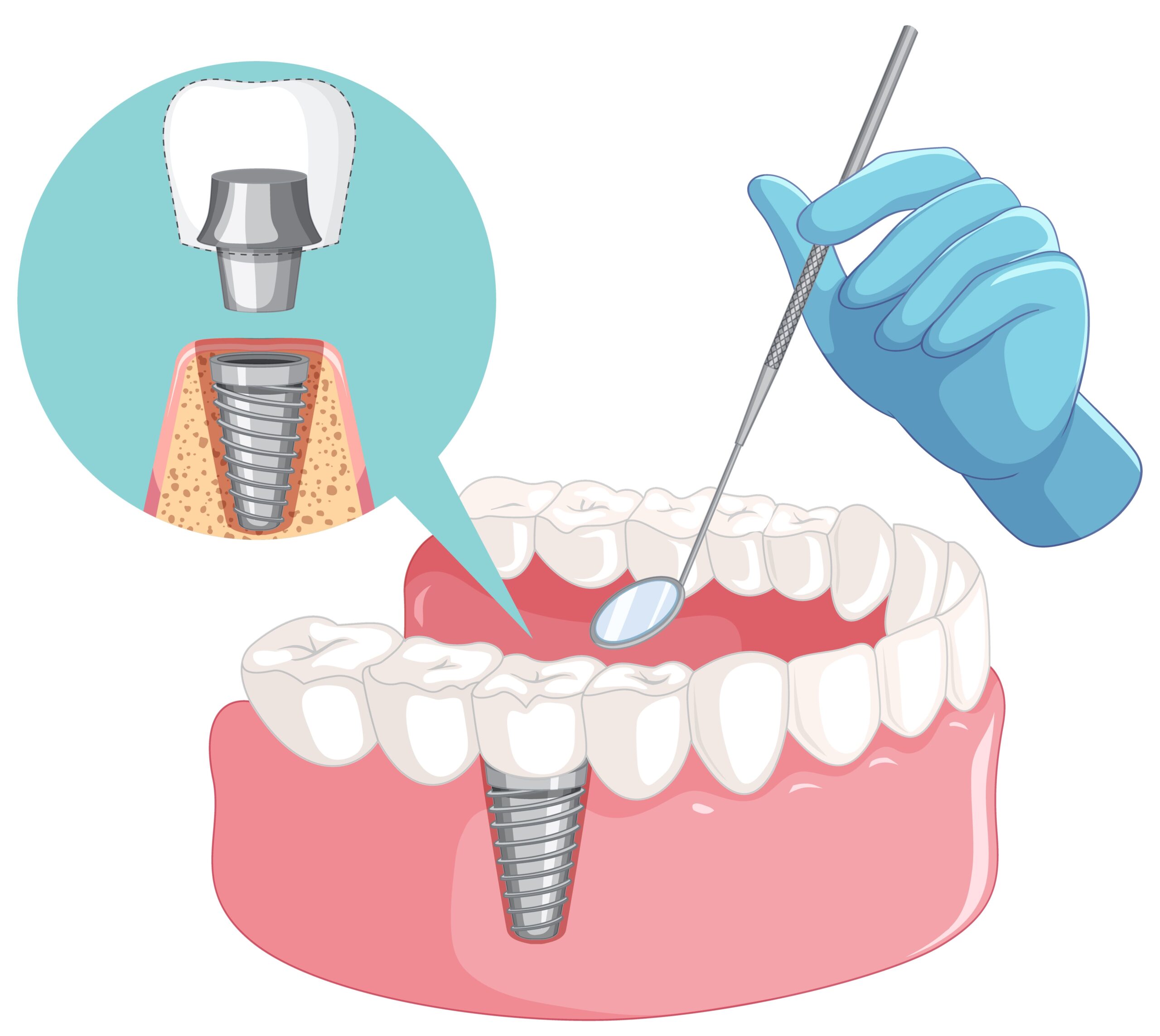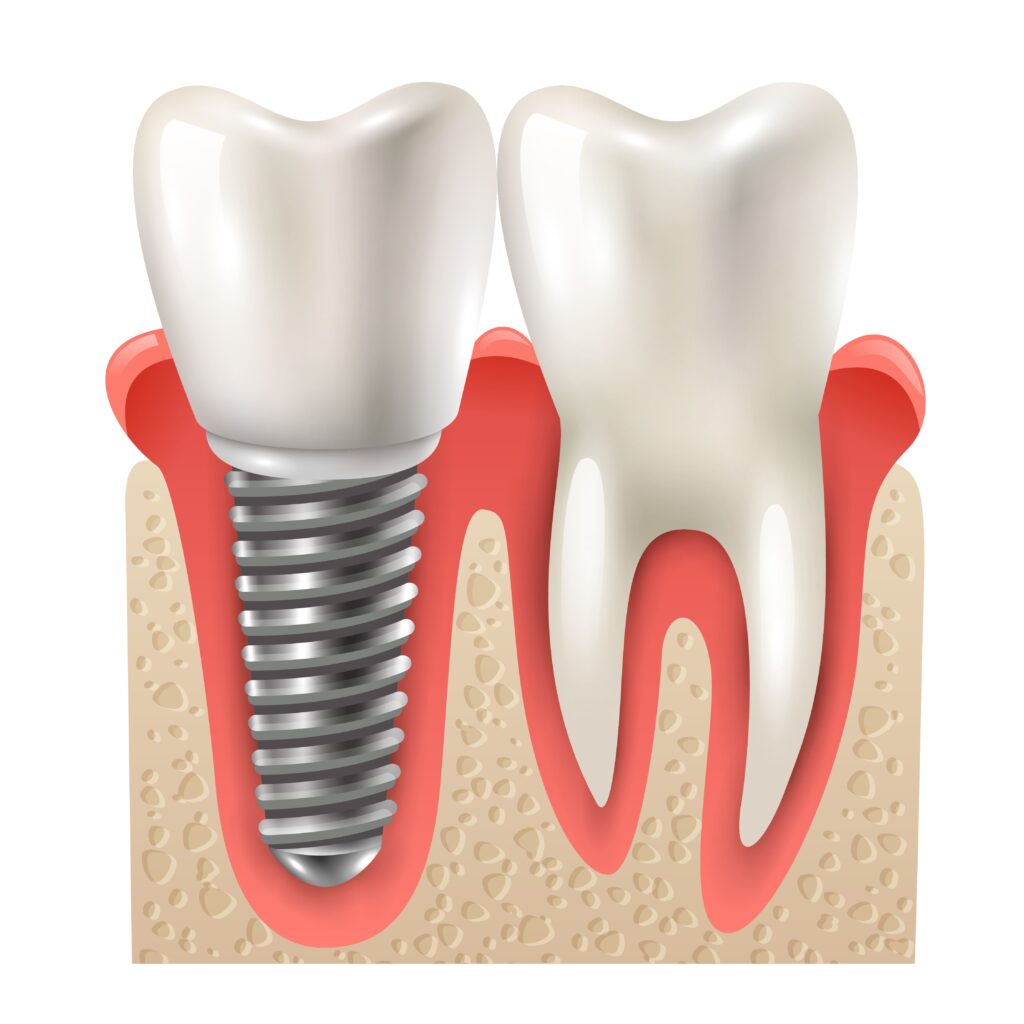
Dental implants have brought about a significant shift in dentistry, providing an innovative way to replace missing teeth and bring back smiles with results that look and function naturally. At the heart of the effectiveness of dental implants lies a fascinating process known as osseointegration. This complex mechanism serves as the cornerstone for the stability, durability, and overall triumph of dental implants. In this guide, we will delve into the process and how education can help you understand the future outlook of osseointegration.
What is Osseointegration?

Osseointegration is the process through which bone and an implant merge, establishing a robust and enduring connection. Fundamentally, osseointegration unfolds through a sequence of intricate biological interactions.
Following the surgical placement of a dental implant into the jawbone, a complex series of events is set into motion. The initial stage involves the formation of a blood clot around the implant, serving as a foundation for subsequent processes.
Specialized bone-forming cells called osteoblasts migrate to the implant surface, initiating the deposition of bone matrix. Over time, these bone cells gradually integrate with the implant surface, establishing a firm and enduring connection.
Osseointegration – The Process

Stage 1 – Hemostasis
Within 2-3 minutes of placing the Dental Implant into the surgical site, the first phase of Osseointegration kicks off. Blood coagulates around the implant, forming collagen fibers that connect the implant surface with ruptured microblood vessels. Platelets gather around these collagen fibers, creating a matrix and laying the groundwork for the bone repair process.
Stage 2 – Inflammation
Hours after the Dental Implant surgery, the second phase of Osseointegration, known as inflammation, begins. Immune cells get to work, cleaning up the surgical site by removing debris, potential bacteria, and small bony residues. Peri-vascular cells start repairing and regenerating micro blood vessels during this stage.
Stage 3 – Proliferative Stage
Days after the Dental Implant surgery, the third phase, Proliferation, begins. Peri-vascular cells regulate angiogenesis, leading to the formation of Osteoblast cells (Bone Forming Cells) and Fibroblast cells (Fiber forming cells). Osteoblast cells facilitate the creation of new bone by releasing calcium phosphates and carbonate around collagen fibers. This proliferation results in the formation of new bone between the threads of the Dental Implants.
Stage 4 – Remodeling
Months or weeks after the Dental Implant surgery, the fourth phase of Osseointegration, called Remodeling, starts. At this point, the implant integrates with the bone and tissues. Osteocytes initiate the regeneration and bone remodeling phase. Once Remodeling is complete, the dental implant has fused with the bony tissues, and the dentist can proceed with placing the teeth over the Dental Implants, also known as Loading.
The Role of Osseointegration in Dental Implants
Ensuring Stability and Endurance
Osseointegration plays a crucial role in providing stability to dental implants. Once fully integrated, the implant becomes a robust base for prosthetic teeth like crowns or dentures. This stability ensures that your dental restoration feels and functions like natural teeth, enabling you to eat, speak, and smile with confidence.
Preventing Jawbone Loss
Another essential function of Osseointegration is its ability to prevent bone loss in the jaw. After losing a tooth, the jawbone in that area can start deteriorating due to a lack of stimulation. Dental implants, facilitated by Osseointegration, emulate the natural tooth root, offering the necessary stimulation to maintain bone density and prevent further resorption.
Long-Term Investment
Osseointegrated dental implants are crafted for lifelong durability with proper care. In contrast to traditional tooth replacement methods like bridges, which may require replacement over time, a dental implant anchored by Osseointegration can last for decades, presenting a cost-effective and resilient solution.
Enhanced Oral Well-being
Osseointegration contributes to improved oral health by preserving the integrity of neighboring teeth. Unlike dental bridges, which necessitate the alteration of adjacent teeth for support, dental implants stand independently through Osseointegration. This means your natural teeth remain untouched, reducing the risk of damage or decay in surrounding teeth. Additionally, because implants closely resemble natural teeth, they encourage better oral hygiene habits, as they can be cleaned similarly to real teeth.
Elevated Quality of Life
Osseointegrated dental implants not only restore your smile but also enhance your overall quality of life. They provide a stable and comfortable bite, enabling you to enjoy various foods without discomfort or concern about your dental restoration shifting. Moreover, the confidence that comes with a natural-looking smile can positively impact your social interactions, self-esteem, and overall well-being.

Conclusion
Osseointegration is the silent force behind the success of dental implants. This remarkable process ensures the stability, functionality, and longevity of your dental restoration. By integrating your implant seamlessly into your jawbone, Osseointegration secures your dental implants and safeguards your oral health.
Whether you’re contemplating dental implants or already have them, understanding the importance of Osseointegration empowers you to make informed decisions about your dental care. Armed with this knowledge, you can confidently embrace the advantages of dental implants, knowing your smile is anchored in strength and stability. For more information, reach out to us at Gnathos Dental.
